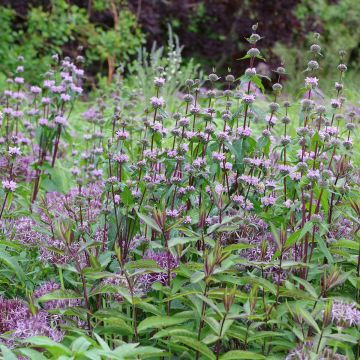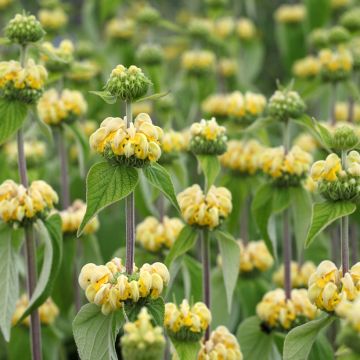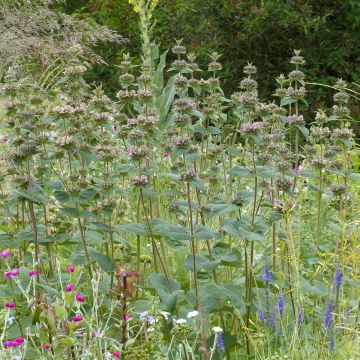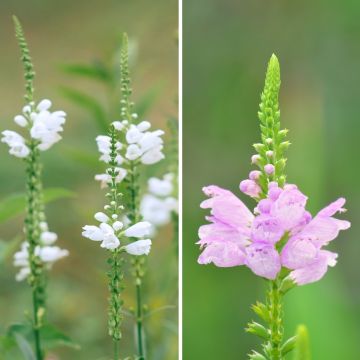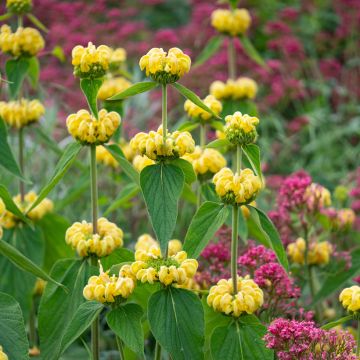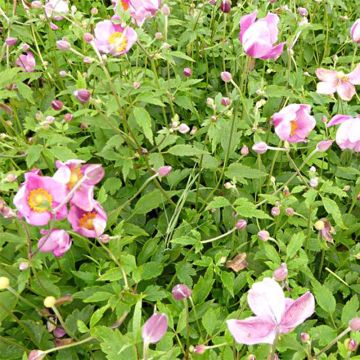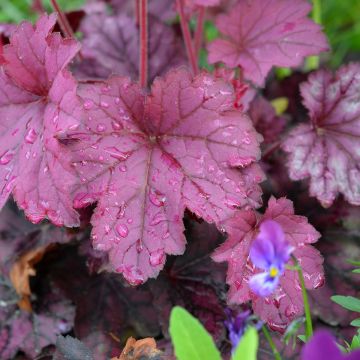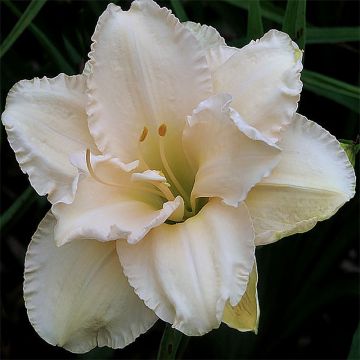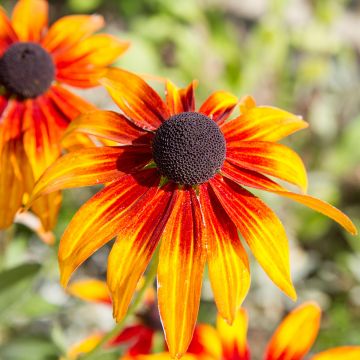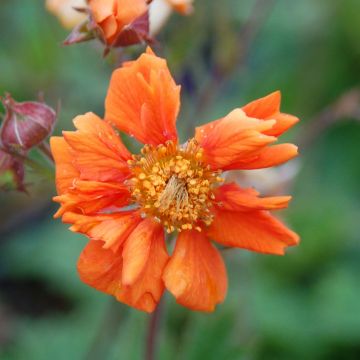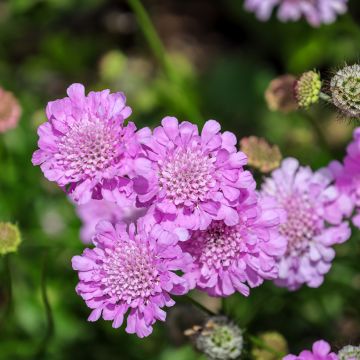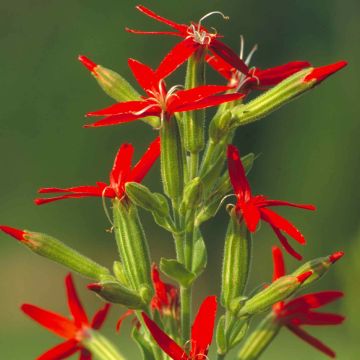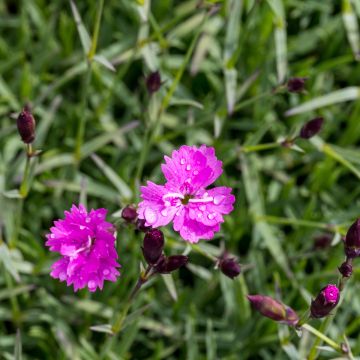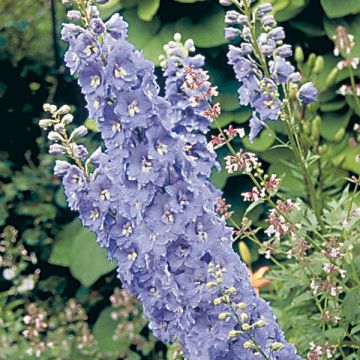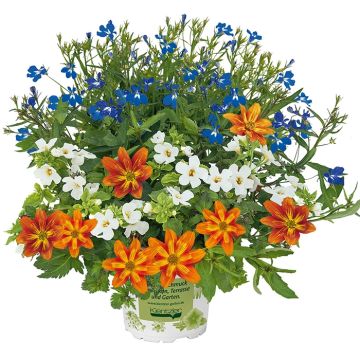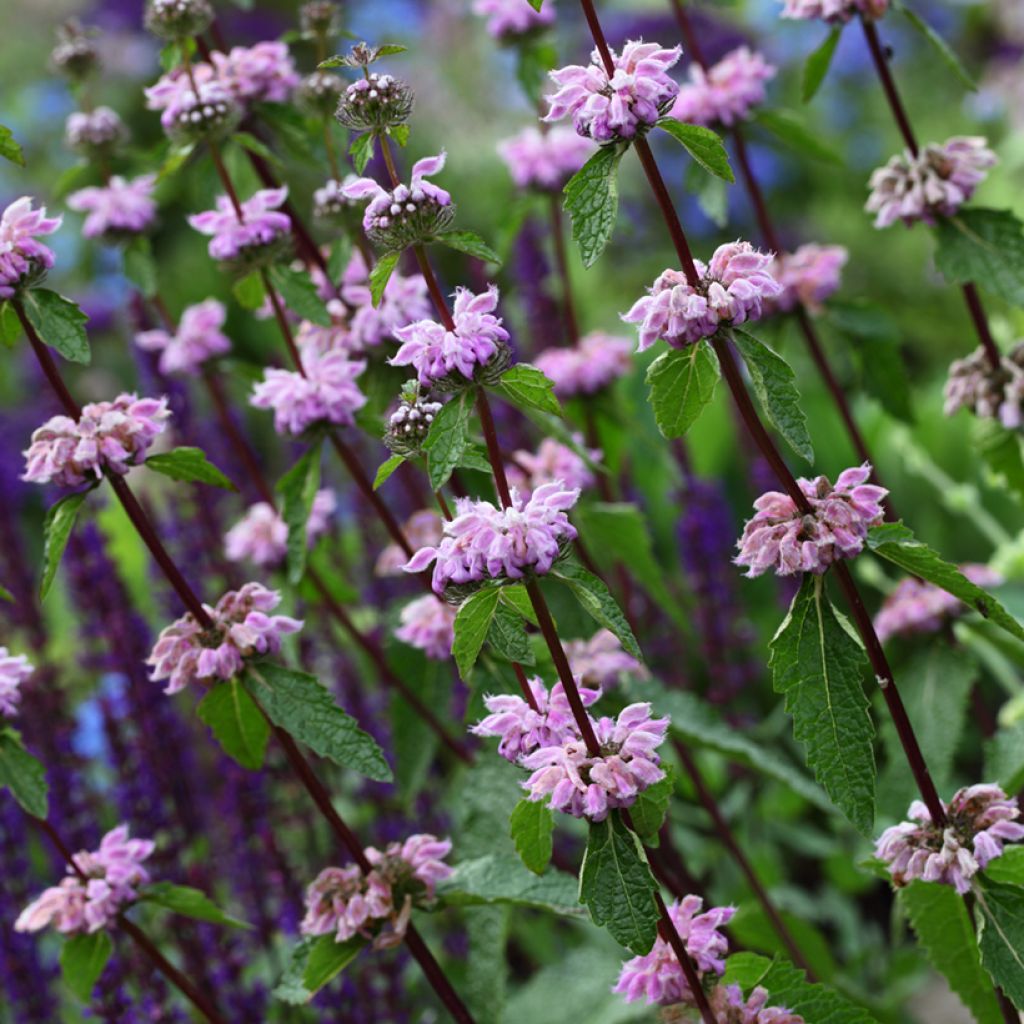

Phlomis cashmeriana
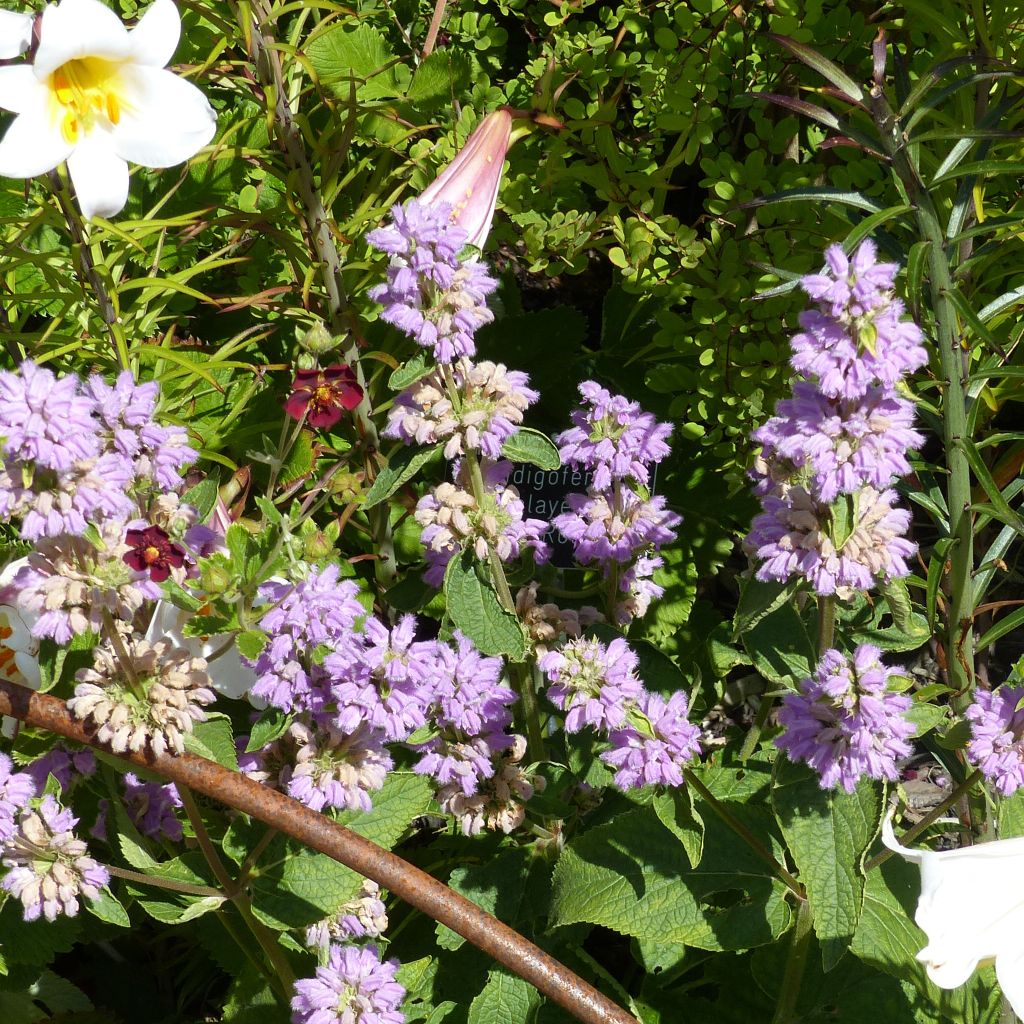

Phlomis cashmeriana
Phlomis cashmeriana
Phlomis cashmeriana
Kashmir Sage
Shaved
Anne-Marie T., 03/04/2020
This plant carries a 12 months recovery warranty
More information
We guarantee the quality of our plants for a full growing cycle, and will replace at our expense any plant that fails to recover under normal climatic and planting conditions.
From €5.90 for pickup delivery and €6.90 for home delivery
Express home delivery from €8.90.
Delivery to Corse prohibited: UE law prohibits the import of this plant from mainland France to Corse as part of the fight against Xylella fastidiosa. Please accept our sincere apologies.
More information
Does this plant fit my garden?
Set up your Plantfit profile →
Description
Phlomis cashmeriana is a hardy perennial unfairly overlooked, originating from the driest regions of the western Himalayas and Kashmir. This plant forms spreading clumps of beautiful lanceolate leaves with a grey-green colour and a silvery woolly underside, from which emerge in early summer short but numerous leafy stems bearing in their upper part crowns of small light pink lilac flowers. In the garden, it will thrive in full sun, partial shade, or even shade, in deep and well-drained soil. It will be content with rainwater, even if it is scarce in summer.
Phlomis plants are shrubs or perennials belonging to the Lamiaceae family, just like lavender. This genus, mostly of sub-Mediterranean origin, presents remarkable diversity, but it is not well-represented in gardens, despite the robustness and adaptability of the approximately 40 species that compose it. Unlike many other plants from Mediterranean climates, they age well and live for many years without maintenance.
Phlomis cashmeriana, also known as Kashmir Sage, is a deciduous herbaceous perennial widespread in the mountainous and dry areas of Afghanistan, Pakistan, and the far west of China. The plant spreads through robust and woody non-trailing rhizomes and forms tall clumps from spring, ranging from 60 to 100cm (24 to 39in) in height, with a spread of approximately 60cm (24in). Depending on the climate, flowering occurs from May to July, sometimes until September if conditions allow it. In regions with dry summers, the plant goes dormant during the hottest months. The inflorescences in whorls are composed of small mauve to soft pink helmet-shaped flowers, regularly arranged in layered crowns towards the top of the flowering stem. The beautiful oblong and lanceolate green leaves, 10 to 16cm (4 to 6in) long and 2 to 5cm (1 to 2in) wide, are thick, with slightly crenate margins, a very soft greyish-green colour on the slightly hairy upper side. They have a very tomentose almost white underside. The vegetation often disappears from September and only re-emerges in March-April.
Phlomis cashmeriana is a robust plant that is easy to grow, in all exposures, in borders or rock gardens. It is an excellent perennial for hot and dry climates in summer, even though it doesn't mind slightly moist but perfectly supple and well-drained soil. It can be combined with shade-loving plants such as bear's breeches, periwinkles, and ivy, which it will keep in check. Its bushy habit will harmonise with rounded shrubs such as wormwoods, bay laurels, common myrtle, Phillyrea, or Mexican orange blossom. It also thrives in sunny borders, alongside hastata verbenas, campanulas, shrubby salvias, lavenders, catmints, or lady's mantles.
Report an error about the product description
Phlomis cashmeriana in pictures
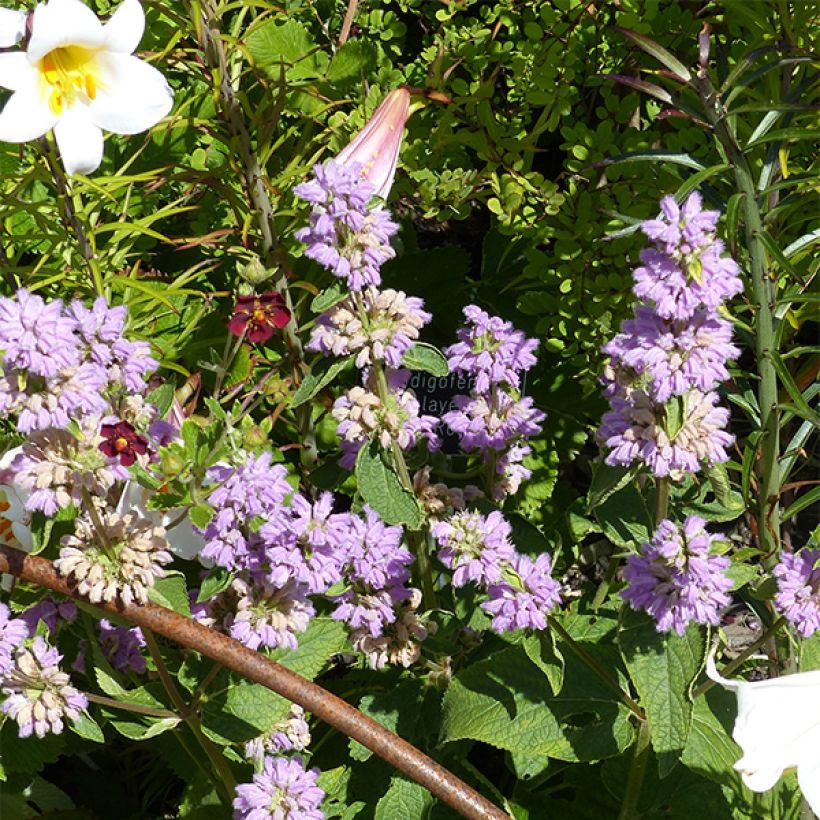

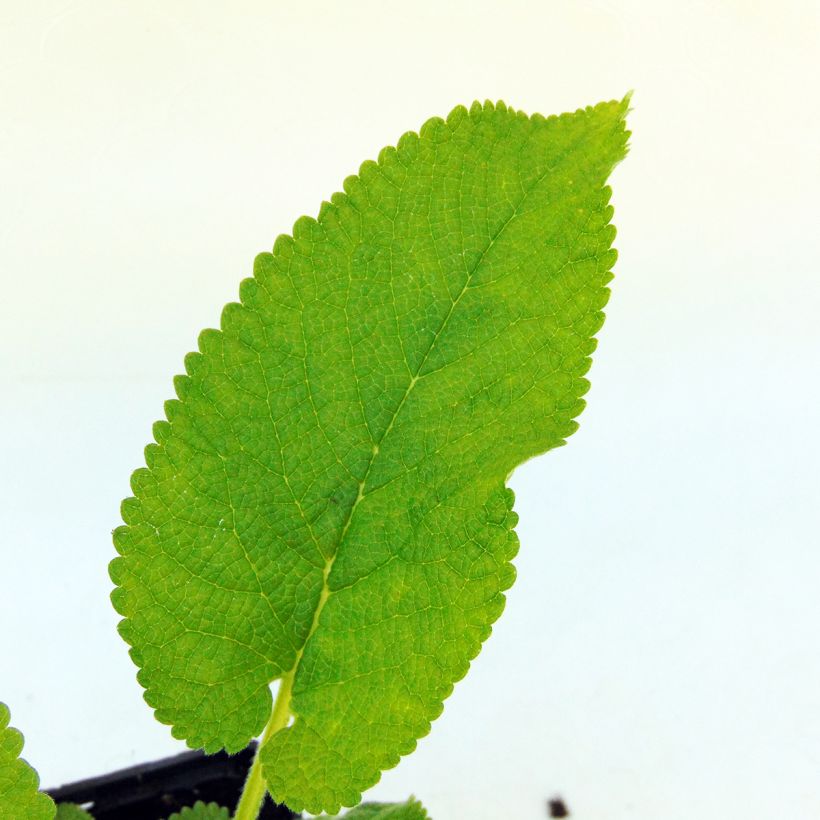

Flowering
Foliage
Plant habit
Botanical data
Phlomis
cashmeriana
Lamiaceae
Kashmir Sage
Himalayas
Other Phlomis - Hardy Jerusalem sage
Planting and care
Grow Phlomis cashmeriana in full sun or partial shade. Plant it in a loose and well-draining soil, preferably deep and even chalky. This phlomis tolerates a poor and dry soil very well in summer, but it will be less spectacular and its foliage will tend to disappear. It is hardy up to -18°C (1°F) in a perfectly drained soil. In hot and dry climate in summer, it is preferable to plant in autumn.
Planting period
Intended location
Care
-
, onOrder confirmed
Reply from on Promesse de fleurs
Summer flowering perennials
Haven't found what you were looking for?
Hardiness is the lowest winter temperature a plant can endure without suffering serious damage or even dying. However, hardiness is affected by location (a sheltered area, such as a patio), protection (winter cover) and soil type (hardiness is improved by well-drained soil).

Photo Sharing Terms & Conditions
In order to encourage gardeners to interact and share their experiences, Promesse de fleurs offers various media enabling content to be uploaded onto its Site - in particular via the ‘Photo sharing’ module.
The User agrees to refrain from:
- Posting any content that is illegal, prejudicial, insulting, racist, inciteful to hatred, revisionist, contrary to public decency, that infringes on privacy or on the privacy rights of third parties, in particular the publicity rights of persons and goods, intellectual property rights, or the right to privacy.
- Submitting content on behalf of a third party;
- Impersonate the identity of a third party and/or publish any personal information about a third party;
In general, the User undertakes to refrain from any unethical behaviour.
All Content (in particular text, comments, files, images, photos, videos, creative works, etc.), which may be subject to property or intellectual property rights, image or other private rights, shall remain the property of the User, subject to the limited rights granted by the terms of the licence granted by Promesse de fleurs as stated below. Users are at liberty to publish or not to publish such Content on the Site, notably via the ‘Photo Sharing’ facility, and accept that this Content shall be made public and freely accessible, notably on the Internet.
Users further acknowledge, undertake to have ,and guarantee that they hold all necessary rights and permissions to publish such material on the Site, in particular with regard to the legislation in force pertaining to any privacy, property, intellectual property, image, or contractual rights, or rights of any other nature. By publishing such Content on the Site, Users acknowledge accepting full liability as publishers of the Content within the meaning of the law, and grant Promesse de fleurs, free of charge, an inclusive, worldwide licence for the said Content for the entire duration of its publication, including all reproduction, representation, up/downloading, displaying, performing, transmission, and storage rights.
Users also grant permission for their name to be linked to the Content and accept that this link may not always be made available.
By engaging in posting material, Users consent to their Content becoming automatically accessible on the Internet, in particular on other sites and/or blogs and/or web pages of the Promesse de fleurs site, including in particular social pages and the Promesse de fleurs catalogue.
Users may secure the removal of entrusted content free of charge by issuing a simple request via our contact form.
The flowering period indicated on our website applies to countries and regions located in USDA zone 8 (France, the United Kingdom, Ireland, the Netherlands, etc.)
It will vary according to where you live:
- In zones 9 to 10 (Italy, Spain, Greece, etc.), flowering will occur about 2 to 4 weeks earlier.
- In zones 6 to 7 (Germany, Poland, Slovenia, and lower mountainous regions), flowering will be delayed by 2 to 3 weeks.
- In zone 5 (Central Europe, Scandinavia), blooming will be delayed by 3 to 5 weeks.
In temperate climates, pruning of spring-flowering shrubs (forsythia, spireas, etc.) should be done just after flowering.
Pruning of summer-flowering shrubs (Indian Lilac, Perovskia, etc.) can be done in winter or spring.
In cold regions as well as with frost-sensitive plants, avoid pruning too early when severe frosts may still occur.
The planting period indicated on our website applies to countries and regions located in USDA zone 8 (France, United Kingdom, Ireland, Netherlands).
It will vary according to where you live:
- In Mediterranean zones (Marseille, Madrid, Milan, etc.), autumn and winter are the best planting periods.
- In continental zones (Strasbourg, Munich, Vienna, etc.), delay planting by 2 to 3 weeks in spring and bring it forward by 2 to 4 weeks in autumn.
- In mountainous regions (the Alps, Pyrenees, Carpathians, etc.), it is best to plant in late spring (May-June) or late summer (August-September).
The harvesting period indicated on our website applies to countries and regions in USDA zone 8 (France, England, Ireland, the Netherlands).
In colder areas (Scandinavia, Poland, Austria...) fruit and vegetable harvests are likely to be delayed by 3-4 weeks.
In warmer areas (Italy, Spain, Greece, etc.), harvesting will probably take place earlier, depending on weather conditions.
The sowing periods indicated on our website apply to countries and regions within USDA Zone 8 (France, UK, Ireland, Netherlands).
In colder areas (Scandinavia, Poland, Austria...), delay any outdoor sowing by 3-4 weeks, or sow under glass.
In warmer climes (Italy, Spain, Greece, etc.), bring outdoor sowing forward by a few weeks.

































